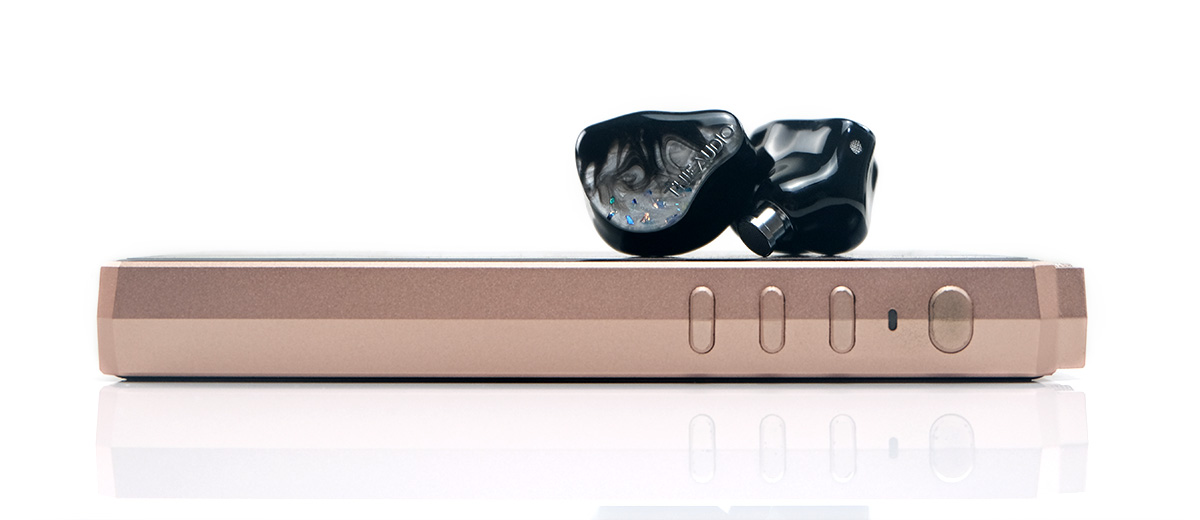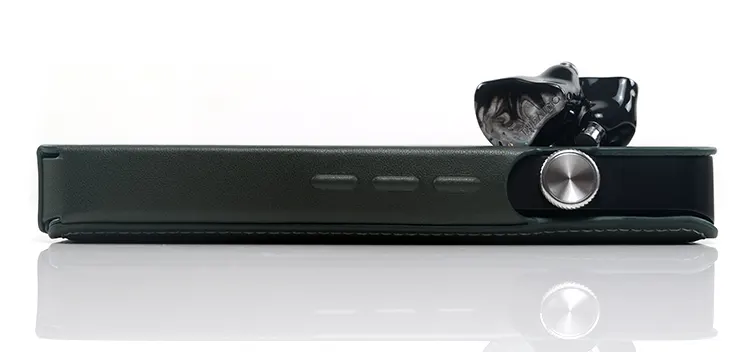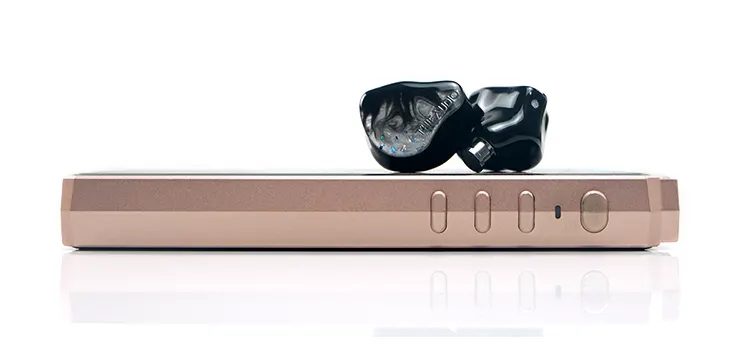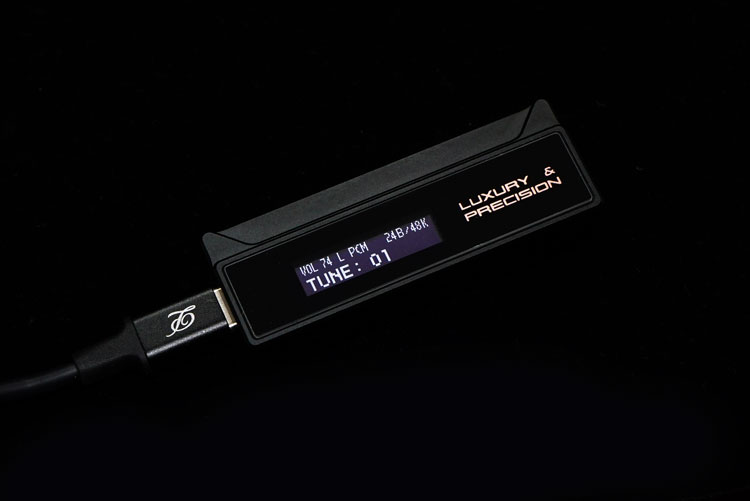Sound Impressions
The following sound impressions of the Monarch MKIII were completed using a mix of the iBasso DX320 with AMP12, and the HiBy RS6 as our main sources.
Summary
I can see why the Monarch series has been praised by so many audiophile enthusiasts for the last few years. The Monarch MKIII punches well above its price point and could challenge some of the high-priced big-name brands with surprising ease.
This is a dynamic and engaging tuning, but also a detailed and very refined performance with excellent depth, clear vocal presence, and sparkling well-extended highs.
It is also a quality example of what you can do with a tribrid setup in terms of dynamics, clarity, and simply aiming for those key touchpoints in the frequency response that excites the listener.
Very little of the Monarch MKIII presentation is what I would consider ‘out of whack’. That means nothing overly peaky on the highs, recessed or thin sounding in the mids, or lacking in power on the lows.
It’s not a neutral tuning though, there is some very definite emphasis on the lows and some filled-in upper mids energy that give it a distinct contrast to the previous smoother and more balanced or controlled MKII tuning.
If you are coming from the previous model, the MKIII is going to sound the livelier and more impactful of the two. However, it is also the cleaner-sounding model with higher levels of contrast in its timbre.
Pairing-wise, the Monarch MKIII seems to love any source that is clean, airy, and dynamic sounding. Anything that is overly warm or soft on its lows lacks the wow factor for me. With its dual dynamic isobaric dynamic driver configuration, it deserves to be heard at its full potential.
Frequency Response
The Monarch MKIII is generally a Harman-Centric FR tuning with a few tweaks here and there. You get a gentle lift over neutral from the mid-bass to the lower-mids and just a slight drop in forwardness compared to the MKII from 2-3k.
The MKIII sub-bass though to the mid-bass is north of the benchmark dB amplitude and you can hear that right away, especially when compared to the MKII which has less mid-bass punch and volume.
Despite the minor drop in midrange forwardness when compared to the MKII, the MKIII 1-5k region is lifted and clear sounding. I think it sounds more distinct and clear with improved space and separation compared to the older tuning.
From 5-7k, the MKIII has more ‘fill’ or amplitude in this region compared to MKII and you can hear that in the additional lower treble and percussion liveliness compared to the previous model.
There is a very slight lift also in the Monarch MKIII’s 7-8k region but it’s very minor hence the lack of peakiness. I find the audible treble range to be very nicely balanced and aided by what seems to be a shift upwards in terms of upper-treble extension and headroom over the MKII.
Timbre
The Monarch MKIII coloration ranges from planted and powerful with a sheen of warmth on the lows/lower mids, to clean and articulate with higher levels of contrast through the mids and highs.
Notes are impactful and full-bodied sounding when the isobaric dual dynamic drivers are called upon. Bass guitar and double-kick drum timbre deliver an excellent fundamental when they hit that 100-200Hz range.
I have to tip my hat off to THIEAUDIO for not sucking out the lower mids too much in an attempt to prevent any bass bleed. Yes, there is a drop, there has to be a drop post-mid-bass to prevent excessive bloom and warmth from dominating the sound signature but it’s a gentle dip.
It is also one that stays a little above neutral so not only do you get a nice bit of weight to the lower-mid instruments but you also get some welcome body and a more natural-sounding color. That also works equally well for chest voice mixes that deliver some welcome presence and power.
Countless times I have listened to Metallica on higher-end hybrids only to be greeted with sucked-out lower-mids with James Hetfield barely heard among the cacophony of bass hits and percussion overlay.
That is not the case here making the Monarch MKIII an ideal hybrid choice for classic hard rock and Bay Area Thrash, especially with dynamic clean sources such as the DX320/AMP12.
What you might find though is a slightly cooler tone through the upper mids and treble that can bring a little bit more sheen to percussion instruments such as a tambourine and higher-pitching synth notes.
Head, falsetto, or whistle notes from higher-pitching vocalists will have a bit of a more neutral to slightly brighter tone compared to lower-pitching chest vocals.
Staging & Dynamics
The dynamic range and precision of the Monarch MKII imaging are excellent, possibly best in class at this price point.
The slight drop in midrange imaging aggressiveness from the MKII creates some additional space and as THIEAUDIO has claimed the instrumental separation through the mids has also improved over the older model.
It also has a noticeable step-up in terms of staging depth and height compared to the MKII predecessor, especially in terms of depth with improved power and punch being generated from its dual-dynamic driver combo.
Combine the additional space laterally and vertically with some impressive levels of micro-detail and you get a much deeper and more holographic-sounding presentation.
If there is one critique or brownie point taken off it’s the slightly dominant upper-mid presence in the overall presentation.
It’s probably nitpicking at this point but if there is a track with a bright mix or heavy percussion presence and you are using a clean source then the MKIII will not shy away from delivering that which might upset those who loved the smoother and more relaxed MKII coloration.
Synergy
Efficiency
The THIEAUDIO Monarch MKIII is rated at 20Ω and 99dB @ 1kHz (+/- 1dB). which seems a little less sensitive compared to the MKII which was rated at a higher impedance of 36Ω and an SPL of 108dB/ mW.
In reality, when tested with the balanced output of the iBasso DX320 with AMP12 and the Cayin RU7 dongle, the Monarch MKIII came across as the more sensitive of the two by a few dB. I would assume THIEAUDIO has changed its weighted benchmarking system for both IEMs, hence the different values in sensitivity not playing as you might think during testing.
Out of the other 2 compared IEMs, the 5Ω/108 dB @1kHz Astrotec Pheonix 6, and the 16Ω/108 dB @1kHz SPL Unique Melody MEXT, the Monarch MKIII was the least efficient
All four monitors had no problems from a low gain balanced output of our test DAPs and dongles so the above notes are really in terms of volume levels being lower for matching when compared to the Monarch MKIII.
Background hiss is not an issue with the MKIII either. Even with older DAPs and amps that traditionally have been quite noisy with IEMs such as the balanced output of the older FiiO M15 which was very well-behaved and pleasingly quiet during playback.
Pairing Preferences
I tested four DAPs with the Monarch MKII including the iBasso DX320 with AMP12, the HiBy RS6, the Cayin N7, and the LP P6 Pro. And, I came away with some surprising results.
The first thing I need to mention is the lasting impression that a clean but dynamic source was the best type of pairing for the Monarch MKIII, at least for my personal preference.
Anything too warm or too soft seems to dull the best aspects of the monitor, namely the pace or perceived speed of the dynamic drivers with clarity and headroom from the highs coming in a close second. I should add texture and detail should not be sacrificed either but that goes without saying in most pairings.
DAP Pairings
Out of the selected DAPs, the top performer was DX320 with AMP12 and the LP P6 Pro. I could state that the P6 Pro was the better of the two but the price gap between these two DAPs is quite hefty.
If you happen to have one then congratulations because the textured detail and weighted bass response from the MKIII was incredible. It also was the best at smoothing out any potential quibbles on the highs you might have as well as keeping the mids vocals very natural and rich in detail.
However, to be able to say the DX320/AMP12 was a solid pick at its much lower price point was satisfying. After all, the Monarch MKIII is not a kilobuck-priced monitor either.
The DX320/AMP12’s dynamics and layering on the lows of the MKIII combined with the clarity on the highs produced a beautifully defined and open response from the MKIII. Much more so than the N7 which sounded smoother but also polite and too soft on the lows to tease out the same engaged feeling.
That Cayin pairing almost sounded too controlled for me despite having the more euphonic vocal performances. A similar situation with the RS6 with a less distinct level of definition from the MKIII low-end.
It does increase the bass volume but it simply does not sound as tight as I would like giving too much emphasis to the mid-bass bloom. Mids also lacked the space and resolution that the N7 could offer and it did not deliver the same extended and clear highs on the MKIII as the DX320/AMP12 combo.
Dongle Pairings
I tested 4 dongles with the Monarch MKIII, out of which two were clear winners but that largely depends on the aspect of the MKIII tuning you are attracted to the most.
If it is the best bass texture and presence, or the deepest extension with excellent power then the HiBy FC6 will tease that out of the MKIII in NOS mode. It will also accentuate the upper mids and lower treble a bit more sounding less refined than the Cayin RU7 for the highs in general.
However, I can put up with that because the lows are so addictive from the MKIII when they are on full throttle from EDM and Synthwave with the FC6. Also, a bit more treble sparkle and presence sometimes works well for the MKIII for those genres.
Once you up the complexity of the music with more midrange prominence and more instrumental elements I felt the RU7 was a better pairing with the Monarch MKIII.
It offers an improved level of instrumental and channel separation over the FC6 as well as a slightly wider soundstage. The treble is also smoother and more refined sounding for this pairing.
The other two dongles included the Cayin RU6 and the LP W2. The RU6 sounded much too soft with the focus in all the wrong areas. Granted, the vocals are nice and lush but the mid-bass was bloomy and the impact was a bit soft. It sounded grandiose with the MKIII but without some bite.
The LP W2 has some nice punch to it but the staging felt compressed compared to the first two dongles. Vocals struggled to be heard in the same manner with busy bass-centric tracks.






